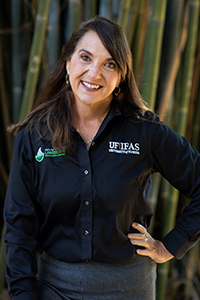Wendy's Wanderings
April 13, 2023
Florida Wildflowers
In North Central Florida the old timers say, "It isn't spring until the pecan tree says so." Meaning that although meteorological spring begins on March 20th, it isn't truly spring until the foliage of the pecan tree comes out.
This year I am inclined to agree. We had one last cold snap before the pecan leaves emerged. What does "spring" even mean in a state that ranges from sub-tropical USDA hardiness zone 11 (the Keys) to temperate USDA hardiness zone 8 (the Panhandle)?
Some joke and say spring is a brief moment of mild temperatures between the "grand pollening" and love bug season. For me the spring season means roadsides of colorful wildflowers after a cool winter. Florida has an amazing array of diverse wildflowers. I was reminded of this during a backroads ride through central Florida in early April. The random arrangement of pinks, purples, yellows, and whites looked like an impressionist painting. When I slowed down and looked at the flowers, I saw the individual blooms.
The pink and purple blooms were phlox, also known as Phlox drummondi. This is not a Florida native plant, but it is widely naturalized on roadsides and pastures. It is a Texas native and not considered harmful to the area ecology. There are native phlox like woodland phlox that you can try in your home landscape.
I saw two types of yellow flowers on my drive. The first was false dandelion (Pyrrhopappus carolinianus). This native plant can get a bad rap in lawns but is a lovely wildflower. The second yellow bloom was a low-growing cutleaf evening primrose (Oenothera laciniata). The yellow flowers formed a carpet along the roadside.
Dotted along the way were the purple blooms of our native spiderwort (Tradescantia ohioensis). This Florida favorite blooms in the morning from spring to fall. Also blooming was the little white, daisylike flower of daisy fleabane (Erigeron quercifolius) and my old frenemy Spanish needles (Bidens alba). Spanish needles is the white daisy with a yellow center that is a bit weedy in the garden but a favorite of honeybees and other pollinators. In summer the palette of wildflowers will turn more of a golden yellow with the blooming of the state wildflower coreopsis.
The Florida Wildflower Foundation has excellent information about what wildflowers are blooming in different areas of Florida. They even have an interactive "What's Blooming" map. Photography is encouraged when it comes to wildflowers. Remember to "click it, don't pick it" because picking the flowers of any endangered or threatened species of plant is illegal in Florida. If you are stopping along the roadsides to enjoy the wildflowers don't be a hazard to traffic and stay in your car if possible.
For more information about many Florida wildflowers and your landscape, read the Gardening Solutions articles "Wildflowers in the Garden" and "Wildflowers for All Seasons."
-- Wendy Wilber

